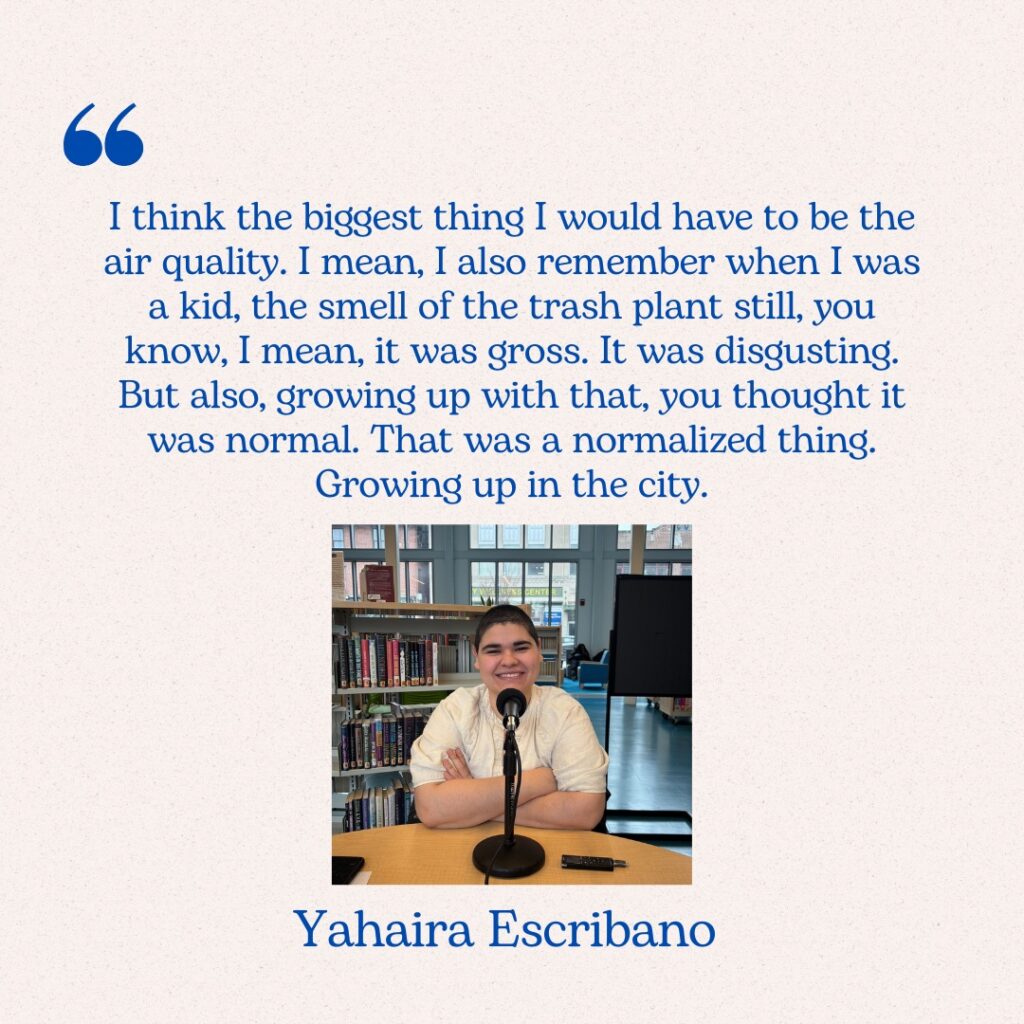Building on the systemic issues of environmental racism and the patterns of neglect described by residents, the impact of the MIRA incinerator on Hartford’s communities shows the real-world consequences of these environmental injustices.
The impact of MIRA on Hartford residents is both short and long-term, impacting not just their health but the environment around them. These concerns range from contaminated soil, air pollution, to exacerbated respiratory problems. Respiratory issues, for example, were mentioned 11 times across interviews, while health related costs were mentioned 12 times.
Many interviewees reported a lack of compensation and documentation of the health impacts MIRA has directly contributed to, worsened, or further developed. As interviewee Diana Heymann mentioned, “I am sure that there probably are… issues that have not been, you know, documented where people have suffered as a result of it, whether it’s COPD, um, you know, those kinds of things. Whether it’s, you know, lung cancer… it has to do with the air pollution.”
High numbers of Hartford residents have pre-existing conditions, like asthma, and suffer from high costs of medical debt from the local healthcare system. Another interviewee, Yahaira Escribano, reported that: “It can be expensive if you don’t have health insurance. And I paid a boatload of money for my stuff and I didn’t have a choice, I didn’t. There would be months where I would go without it and it would suck. And then I had to use my albuterol more than the recommended amount because I just couldn’t breathe.”
Though the environmental damage from incinerators like MIRA is not visible, invisible health effects are felt deeply by residents. These invisible impacts were discussed 21 times during three different interviews, often in the form of adverse health effects and financial burden.
Chronic respiratory issues are not just limited to the home. Hartford, known as one of the asthma capitals of the country, already has high rates of respiratory issues. For those also impacted by the MIRA incinerator, the risk of an asthma attack can be a constant worry. Interviewee Yaharia Escribano stated that: “I don’t go anywhere without my inhaler. My sister doesn’t either. Like, because you don’t know when you’re going to get triggered by a smell or something that’s out there. And I have inhalers everywhere in my car, in here, in my home.”
Constant health burdens can put additional stresses on individuals, and according to interviewee Pedro Bermudez, “…air quality is a consistent issue where I live. So we’re running [air purifiers] nonstop and I’m like, okay, there’s a reason for this. What is it? I’m a mile away from this incinerator.” For some, the only prevention of continuous health issues is to move out of the city. Interviewee Sister Pat, a prominent local advocate, acknowledged that “…you sort of have to get out of Hartford for a better point, a better life.”
The ongoing heath struggles, and environmental burdens caused by the MIRA incinerator shows a broader issue of environmental injustice in Hartford. The personal experiences shared by residents reveal that systemic neglect and environmental racism are not just abstract concepts but real, lived experiences of communities, particularly those most vulnerable to the harmful effects of industrial facilities like MIRA. To ensure long-term solutions, it is essential that policy makers take these voices into account when designing and enforcing policies. The next section explores how current environmental policies and regulations or the lack thereof, have contributed to these ongoing issues and what steps they believe are necessary to prevent further harm.
